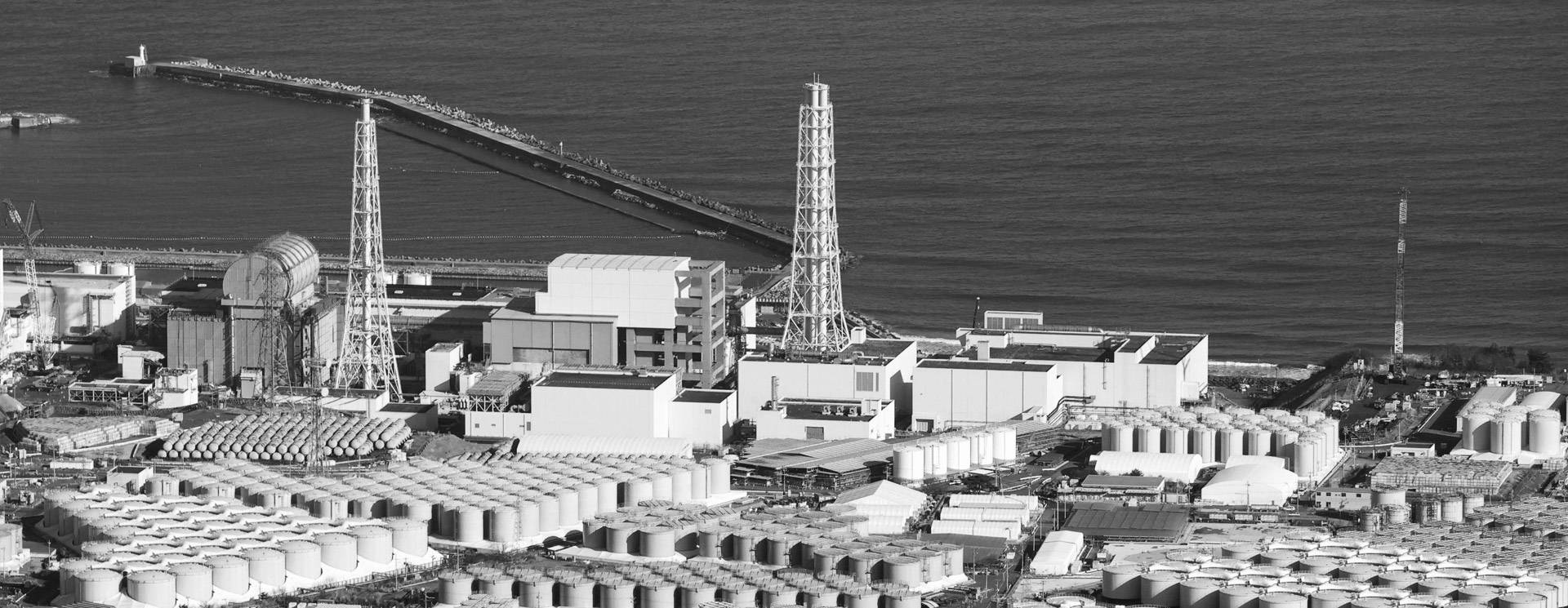
Video link:https://mp.weixin.qq.com/s/VIo5EZbnOk3giDROOr4IDg
福岛核污染水排海现危害 排海是否唯一选择
各位,这里是绿色江南《福岛核污染水专题访谈面对面》,我是主持人雨歌。
据了解,福岛核电站第四轮核污染水排海将于2024年2月下旬开始,排放量为7800吨,届时4轮排放总量累计为3.12万吨。距日本政府正式启动福岛核污染水排海方案至今,已过去近5个月的时间,由于核污染水中含有大量的放射性物质,排放入海的核污染水对日本本土是否产生影响?核污染水存储量是否已到必须排海、无处可存的地步?今天我们邀请到了绿色江南创始人方应君主任来为大家解答。
大家近期应该听过关于大阪府摄津市部分居民的血液中被检出有机氟化合物含量偏高,健康因此受到威胁的报道。调查人员分析认为,这可能与当地河流和地下水中全氟和多氟烷基物质含量超标有关。据了解,此前大阪从未有过血液检测有问题的情况,而全氟和多氟烷基物质难以降解,会在环境和人体中累积,因此被称为“永久性化学物”,与放射性物质性质相似。
这一事件再次引发日本民众对环境公害的关注,日本政府在这方面也有过惨痛教训。世界八大环境公害事件中日本就占了四件(水俣病、骨痛病、四日市哮喘、米糠油事件),很多日本国民深受病痛折磨,这些环境公害事件影响了几代人,至今许多受害者仍在为索赔而斗争。
而经过“多核素去除设备”简单处理的核污染水中饱含氚、锶-90、铯-137、钴-60、碳-14等放射性核素残留。这些放射性核素由于半衰期长,一旦排海,除了污染海洋生态环境之外,还会通过海洋食物链在人体中富集,对人类的生存安全产生威胁。因此,随着时间的推移,排放量的增加,全球海洋生态环境、人类身体健康都将无法保障。
自2011年3月11日,福岛第一核电站发生重大泄露事故之后,日本政府要求方圆30公里以内的居民采取相应的避险措施。截至目前,日本政府仍指定福岛第一核电站周围一定范围为避难指示区域。因此,除厂区内,福岛县有大量的土地空间可以建造更多储存罐用来储存未来30年的核污染水,我们以核污染水每天增加100吨来计算,未来30年新增的核污染水在110万吨左右,也就是说日本政府再建造1000个左右的储罐即可满足需求。而这些储存罐中的核污染水随着时间的推移,多数放射性核素将安全渡过半衰期,对环境和人类的危害也会大大降低。
除此之外,据共同社消息,2023年11月28日,日本政府正式决定,将一系列描绘1945年广岛原子弹爆炸后灾难的照片和视频推荐给联合国教科文组织“世界记忆遗产”候选。日本政府一方面强推核污染水排海,一方面又推荐核爆灾难资料入“世界记忆遗产”,既当受害方,又做施害者,该行为实在让全球匪夷所思。我们希望日本政府能够严肃对待国内民众的关切,正视国际社会抗议,特别是周边邻国的强烈担忧,本着负责任和建设性的态度,妥善处置核污染水。绿色江南将持续关注福岛核污染水排海事件的进展。
Hazards of Discharging Fukushima Nuclear Contaminated Water into the Sea:Is discharging into the Sea the only option?
Compere: Ladies and gentlemen, this is Lvse Jiangnan “Fukushima nuclear contaminated water topic” interview face-to-face, I am the host Yu Ge.
It is understood that the fourth round of nuclear contaminated water discharging from the Fukushima Nuclear Power Plant into the sea will begin in late February 2024, with emissions of 7,800 tons, and the total amount of four rounds of discharges will be 31,200 tons. It has been nearly five months since the Japanese government officially launched the plan to discharge the Fukushima nuclear contaminated water into the sea. Since nuclear contaminated water contains a large amount of radioactive substances, does the nuclear contaminated water discharged into the sea have an impact on the mainland of Japan? Has the storage capacity of nuclear contaminated water reached the point where it must be discharged into the sea and there is nowhere else to store it? Today we invited Mr. Fang Yingjun, founder of Lvse Jiangnan, to answer this question for us.
We may have heard recently about the health risks posed by high levels of organofluorine compounds that have been detected in the blood of some residents of Settsu City, Osaka Prefecture. Investigators have analyzed that this may be related to excessive levels of perfluorinated and polyfluoroalkyl substances in local rivers and groundwater. As far as is known, there has never been a problem with blood testing in Osaka before, and perfluoro and polyfluoroalkyl substances, which are difficult to degrade and accumulate in the environment and the human body, are known as “permanent chemicals” and are similar in nature to radioactive substances.
This incident has once again aroused the concern of the Japanese people about environmental hazards, and the Japanese government has learned a painful lesson in this regard. Japan is responsible for four of the world’s eight major environmental hazards (Minamata disease, bone-pain disease, asthma in Yokkaichi, and the rice bran oil incident), and many Japanese nationals have suffered greatly from their illnesses and pains, which have affected generations, and many of the victims are still fighting for compensation today.
The nuclear contaminated water that is simply treated by the Multi-Nuclide Removal Facility is full of radionuclide residues such as tritium, strontium-90, cesium-137, cobalt-60, and carbon-14. These radionuclides, due to their long half-life, once discharged into the sea, in addition to polluting the marine ecosystem, will also be enriched in the human body through the marine food chain, posing a threat to the survival and safety of human beings. Therefore, with the passage of time and the increase in emissions, the global marine ecosystem and human health will not be safeguarded.
Since the major leakage at the Fukushima Daiichi Nuclear Power Plant on March 11, 2011, the Japanese governmenthas required residents within a 30-kilometer radius to take corresponding evacuation measures. To date, the Japanese government has designated a certain area around the Fukushima Daiichi Nuclear Power Plant as an evacuation instruction area. Therefore, in addition to the plant, Fukushima Prefecture has a lot of land space to build more storage tanks to store nuclear contaminated water for the next 30 years. If we take the increase of 100 tons of nuclear contaminated water per day, the increase of nuclear contaminated water in the next 30 years will be about 1.1 million tons, which means that the Japanese government can build about 1,000 more storage tanks to meet the demand. And with the passage of time, most of the radionuclides in the nuclear contaminated water in these storage tanks will safely pass their half-lives, and the hazards to the environment and human beings will be greatly reduced.
In addition, according to Kyodo News, on November 28, 2023, the Japanese government officially decided to recommend a series of photos and videos depicting the disaster of the atomic bombingin Hiroshima in 1945 to UNESCO for inscription on the list of the“Memory of the World Heritage”. On the one hand, the Japanese government is pushing for the discharge of nuclear contaminated water into the sea, and on the other hand, it is recommending the inclusion of information on the disaster of the atomic bombing in the “Memory of the World Heritage”, and is acting as a victim as well as a perpetrator, which is really mind-boggling to the whole world. We hope that the Japanese government will take seriously the concerns of its domestic people, face up to the protests of the international community, especially the strong concerns of its surrounding neighbors, and properly dispose of the nuclear contaminated water in a responsible and constructive manner. Lvse Jiangnan will continue to pay attention to the progress of the discharge of the Fukushima nuclear contaminated water.
福島原発の汚染水排出の危険性 海洋放出しか選択肢はないのか?
Content source: Lvse Jiangnan WeChat public account
